I spent years trying to combat window condensation – then a simple dish-soap trick turned out to be the key all along
The dish soap condensation hack takes five minutes to do, is oh-so effective, and cleaning pros love it


I’ve lived in my home for three years and have spent most of that time battling damp droplets on my windows. That was until I discovered the dish soap window condensation hack.
After using it for over two months, I can confirm it’s a game-changer and a time-saver. Cleaning pros also agree it’s a clever way to tackle the problem. They’ve shared top tips for trying it and I’ve run through the steps required, as well as weighing up the pros and cons.
If you’re looking to get rid of window condensation quickly and effectively, I can’t recommend this trick enough.
What is the dish soap window condensation hack?
This hack involves applying dish soap to a window with a cloth and buffing it onto the entire affected section. This is a great way to stop condensation forming on windows.
Joy Ramos, cleaning expert at Bear Brothers Cleaning, says, ‘It works because the surface active agent that the dish soap contains reduces the surface tension of water. This prevents moisture from forming into droplets, creating fog or condensation on the glass. Instead, the moisture spreads into an invisible layer, keeping the windows clear.’
When using dish soap to clean windows, one of the most important aspects to consider is what kind of soap you’re using.
Muffetta Krueger, cleaning expert and founder of Muffetta's Housekeeping, explains, ‘Opt for a basic dish soap without added dyes or harsh chemicals to avoid residue.’ For example, the Palmolive dish soap from Amazon is fragrance-free and made with 100% biodegradable cleaning ingredients.
You can also use natural Castile soap for cleaning all around the home. It's a non-toxic home essential made from natural oils, is gentle enough to use on your skin and hair and safe for use around children and pets.
When using the dish soap hack on your windows, it's important not to use too much, as this will prevent streaks or bubbles, which are both big window cleaning mistakes. ‘I mix one teaspoon of dish soap per one quart of water,’ explains Joy.
From here, you simply spray it onto your cloth or sponge, buff your windows, and then buff again with a dry cloth in order to clear any excess liquid and prevent streaks. This will then dry as a water-repelling layer.
Muffetta continues, ‘The soap film will eventually wear off, so reapply every few weeks or as necessary, especially during colder months.’
How to do it

- Step 1: Wipe any existing condensation off your windows. I use the Homexcel microfiber cleaning cloths from Amazon, as they’re lint-free and scratch-free (plus, the colors make my cleaning supplies look so stylish).
- Step 2: Create your dish soap cleaning solution. Joy Ramos recommends mixing together one teaspoon of dish soap per one quart of water in a spray bottle. I put mine in a glass spray bottle similar to the glass spray bottles from Walmart, as it’s reusable and easy to clean.
- Step 3: Spritz this onto your microfiber cleaning cloth. I do this instead of applying the liquid straight onto the windows, as this avoids excess liquid on your window.
- Step 4: Use your cloth to buff the mixture onto the window, using gentle circular motions.
- Step 5: Buff the window with a clean, dry cloth in order to remove visible streaks.
- Step 6: Leave to dry.
Step 7: Keep an eye on your windows. The soap film will eventually wear off, so make sure to reapply when necessary – especially during colder months.
Pros and cons
The pros: I love that this hack doesn’t involve having to buy any additional products. All you need is dish soap, cleaning cloths, and a spray bottle. It’s also super time-efficient – it took me under five minutes
Unlike using heavy chemical solutions, the diluted soap and water mix had a lovely fragrance and left my room with a fresh scent, so it turned out to be an easy and unexpected way to make my house smell nice.
It also has saved me from running dehumidifiers like the bestselling Tabyik dehumidifier from Amazon every single day. This is much more energy-efficient.
The cons: The soap film does leave a slightly smeary appearance on the windows. I don’t mind this as I only get condensation on windows overnight in my bedroom, but if you’re applying this to somewhere visible to guests like the living area or kitchen, this might be a concern to you.
The final thing to be aware of is even if this stops condensation gathering on your windows, it does not reduce the humidity in your house. If you don't get to the root cause of the condensation, it may well collect elsewhere in the room, and potentially leave your home at increased risk of mold.
Create moisture channels, and use simple dehumidifying methods such as strategically placing moisture absorbing bags, available at Walmart near windows, or 'shock ventilating' daily to reduce the cause of condensation.
My verdict
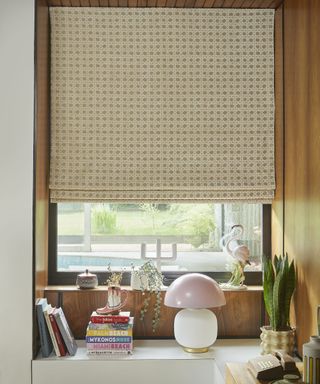
I give the dish soap window condensation hack a firm 8/10. I have been using this for the past two months and I’ve found the method to be super effective. I like it because it takes me under five minutes to do per window and it has meant that I’ve spent much less time getting rid of black mold from my window frames.
I’ve had to reapply the soap layer twice during this time, but I have been testing this during the winter. This might be less frequent during warmer months when condensation is less prevalent and proper ventilation easy to keep up with.
While this is a super way to stop pesky droplets from forming, it doesn’t get the full 10/10 from me as it needs to be combined with other techniques in order to stop moisture from spreading around the room.
Joy Ramos says, ‘I open windows to increase airflow in the space and to reduce overall humidity levels.’
I do this during the day, as well as running my trusty dehumidifier right next to the window.If you do see any water forming in between soap layer applications, you can also try using window vacuums to curb condensation even further.
What to shop
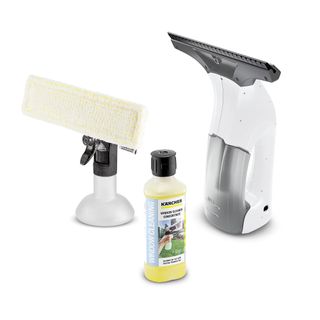
This is cordless and compact, making moving it and storing it a total breeze. If you haven't owned one before, it's worth finding out the things worth knowing before buying a window vac.
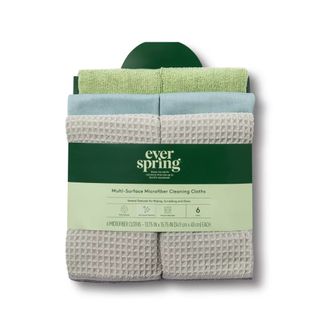
I think that these neutral colored cloths are seriously chic. Shoppers love that they are soft, absorbent, and washable. Plus, each cloth has a hanging loop, so you can store and dry them easily.
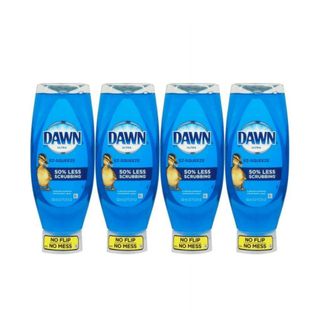
When I ask cleaning pros for soap recommendations, Dawn's formula comes up time and time again as a go-to. I like that these bottles make it easy to squeeze onto sponges and cloths, as well as into bottles – which is ideal for doing this dish soap window condensation hack.
I spend so much less time dealing with condensation thanks to this dish soap hack. Now I’m free to focus on my spring cleaning checklist.
For those less concerned about condensation and more concerned about dirt, you could try the ‘Pink & Blink window cleaning hack’ instead, which is perfect for tackling winter grime.
Sign up to the Homes & Gardens newsletter
Design expertise in your inbox – from inspiring decorating ideas and beautiful celebrity homes to practical gardening advice and shopping round-ups.

Eve is a freelance lifestyle editor and writer with over five years of experience working for digital and print titles. Previously she was a content editor at Real Homes. She has a keen eye for sophisticated style and is able to spot design trends before they go viral. As well as this, she loves solving pain points around the home. Alongside writing for Homes and Gardens, she's the founding editor of The Notts Edit and is a lecturer in journalism at Nottingham Trent University. When she’s not writing, you can find her decorating her rental with Scandi decor, tending to her houseplants, and growing vegetables in her garden.
You must confirm your public display name before commenting
Please logout and then login again, you will then be prompted to enter your display name.
-
 How to get nail polish out of carpet – 5 simple solutions to successful stain removal
How to get nail polish out of carpet – 5 simple solutions to successful stain removalAll is not lost, experts assure
By Ciéra Cree Published
-
 How to grow gaura – and boost your yard with glorious, dancing beeblossom
How to grow gaura – and boost your yard with glorious, dancing beeblossomGaura adds a delicate touch to any summer yard display with its slender, arching stems and endless flowers
By Jill Morgan Published
-
 Why does my house feel damp? Experts reveal the 7 common reasons, risks and fixes to apply right now
Why does my house feel damp? Experts reveal the 7 common reasons, risks and fixes to apply right nowIf your house smells musty, there might be underlying damp to sort out
By Sophie Warren-Smith Published
-
 Do you have condensation on the outside of your windows? This simple rule of thumb determines if it's normal, or a sinister warning sign
Do you have condensation on the outside of your windows? This simple rule of thumb determines if it's normal, or a sinister warning signHVAC pros share expert insight
By Ciéra Cree Published
-
 HVAC pros reveal 2 'Goldilocks' ranges for the ideal room temperature in bitter winter – it differs from day to night, and room to room
HVAC pros reveal 2 'Goldilocks' ranges for the ideal room temperature in bitter winter – it differs from day to night, and room to roomKeeping rooms at the right temperature is vital for comfort and efficiency
By Ciéra Cree Published
-
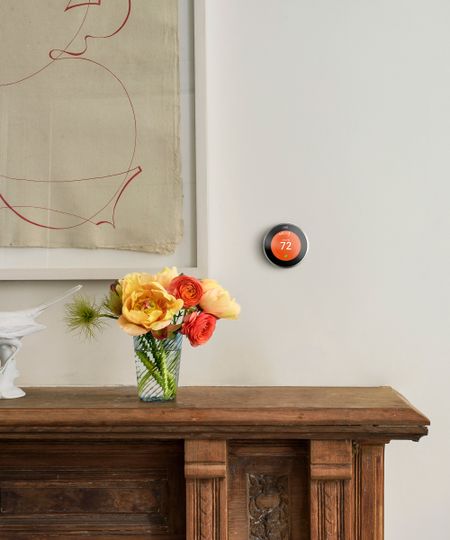 HVAC pros say this is the most efficient heating schedule to keep you warm at home all day – and why automating it is the best move
HVAC pros say this is the most efficient heating schedule to keep you warm at home all day – and why automating it is the best moveThere’s no one-size-fits-all – here’s how to tailor heating to your home
By Chiana Dickson Published
-
 How dust and dirt increases your energy bills – plus 5 ways HVAC pros deal with it to cut costs
How dust and dirt increases your energy bills – plus 5 ways HVAC pros deal with it to cut costsThese cleaning tips could save you hundreds
By Chiana Dickson Published
-
 Is your house heating unevenly? HVAC pros reveal 5 common reasons, plus their top tricks for consistent heating throughout your home
Is your house heating unevenly? HVAC pros reveal 5 common reasons, plus their top tricks for consistent heating throughout your homeEliminate hot and cold spots with these fixes
By Chiana Dickson Published
-
 What is a zoned heating HVAC system? We get the lowdown from the pros
What is a zoned heating HVAC system? We get the lowdown from the prosThis expensive addition could actually save you money
By Sophie Warren-Smith Published
-
 What temperature should a house be during a big freeze? HVAC pros reveal why this 'Goldilocks' temperature is so important for your health and home
What temperature should a house be during a big freeze? HVAC pros reveal why this 'Goldilocks' temperature is so important for your health and homeIt goes beyond your own comfort – it protects your property, too
By Chiana Dickson Published